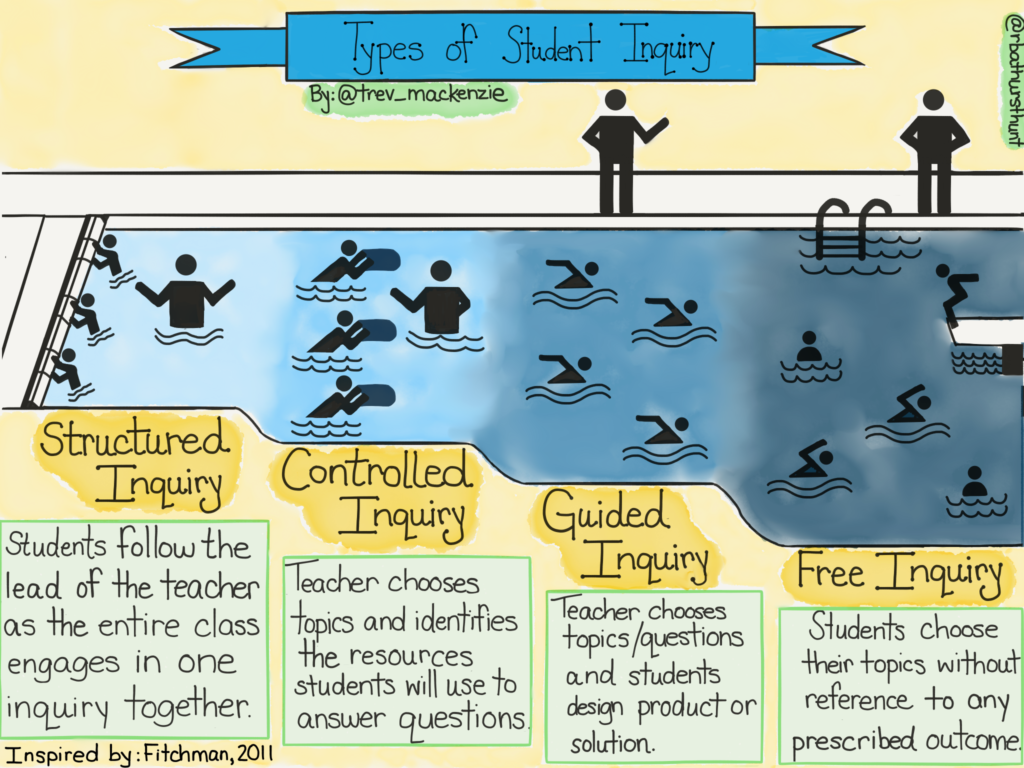Diving into Inquiry-based Learning…
Up until our most recent class, I did not truly understand what inquiry-based learning is. While, yes, I have heard the term before and, as a matter of fact, I have done my own inquiry project. Yet, I did not know how to implement that into a young child’s education. As a post-secondary student, I feel I have the resources and previous knowledge to tackle and take on a question to further research it. However, a kindergarten student does not have those same tools accessible to them (yet!)
This image curated by Trevor MacKenzie and Rebecca Bathurst-Hunt immediately struck me as a lightbulb moment. Following the extremely engaging lecture by MacKenzie, it dawned on me that student inquiry is a slow moving process. As Mackenzie said, “don’t kick kids in the deep end right away, start shallow and lead them to deeper waters.” This following visual gave me the clarity I needed to truly understand. The infographic demonstrates the progressive steps a teacher must take at the beginning of the year to eventually get to a successful “free inquiry.” But with that being said, it is important to remember student inquiry is not always free inquiry – a concept I was often stumped on.

Prior to attending this class, I listened/watched this powerful video of Bathurst-Hunt speaking (see YouTube below). While it is a bit lengthy, I highly recommend it for those interested in creating a world of exploration in education. As Bathurst-Hunt has said in other videos, when children enter the school system they are excited and curious to learn. This is why inquiry-based learning is so valuable at a young age. We, as educators, can encourage children to explore their “wonders” by allowing them to take initiative of their own learning, with the proper guidance.
I could endlessly add and express my love for the infographic’s designed by MacKenzie and Bathurst-Hunt, but that would make this a very lengthy post. One more image I would like to draw attention to is “Nurturing the Whole Child.”

In our Learner’s and Learning Environment course, we have been focusing on meeting each student’s needs for learning to occur. While each child is unique, all individuals have the same psychological needs that must be met. Yet, these needs may be achieved through different approaches.
When a flower doesn’t bloom you fix the environment in which it grows, not the flower. – A. Den Heijer
An inquiry-based classroom is a place of security and fosters the “wonders” of learning. It is a space where all students, and teacher included, learn together. MacKenzie told our cohort, that in September, he views his student’s as individuals full of rich, prior knowledge; also known as constructivism. I found this statement quite valuable moving forward and cannot wait to experiment with inquiry-based learning in a classroom of my own one day.
I could not be more thankful for this opportunity as it truly changed the way I view student learning and it certainly is something I look forward to using in the future.
Now, I am off to enjoy reading break. I’ll be back in a week!
xoxo missrose
